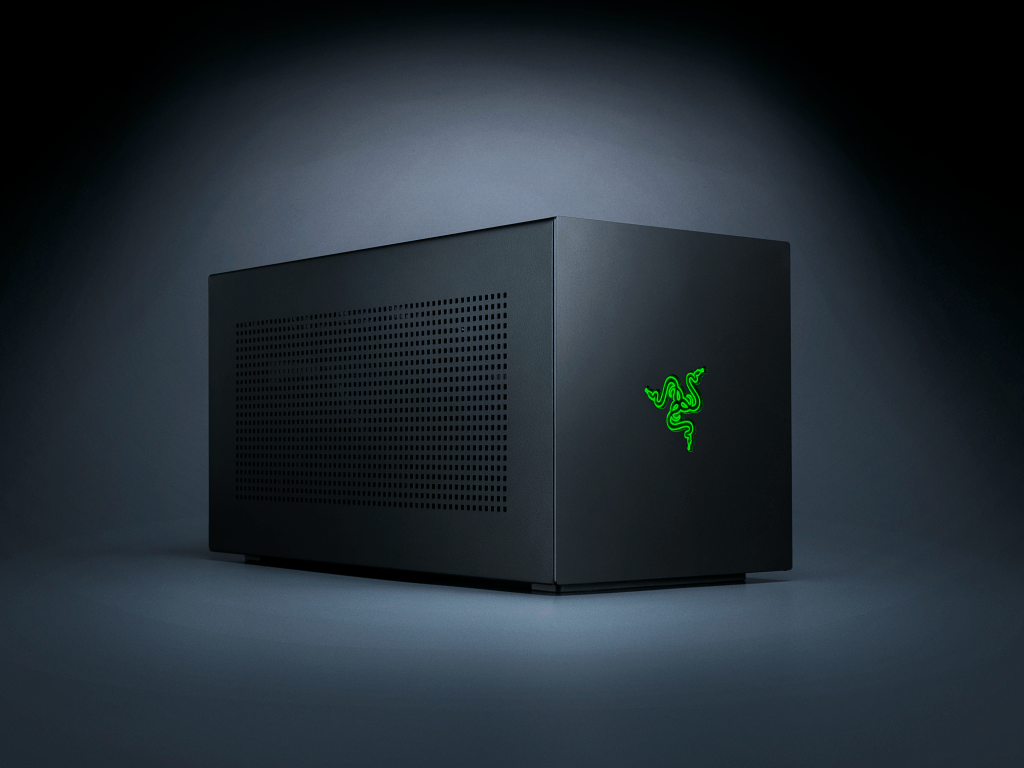Razer has recently unveiled its latest iteration in the realm of external GPUs, the Razer Core X V2, alongside the introduction of its new Thunderbolt 5 dock. While the Core X V2 expands the possibilities for external graphics, it has raised eyebrows among enthusiasts and gamers alike due to its steep price tag and omitted features compared to its predecessors. As the gaming community anticipates the potential of Thunderbolt 5 technology, we delve into what this new offering entails and whether it meets the market’s expectations.
Evolution of External GPU Technologies
External GPUs, or eGPUs, have revolutionized the way gamers utilize graphics power. Before the widespread adoption of Thunderbolt technology, aspiring gamers faced challenges when trying to boost performance on their relatively modest laptops. Razer’s original Core X provided an elegant solution, enabling users to connect high-performance graphics cards to their systems. It boasted a remarkable 650W power output and came equipped with USB slots and a gigabit Ethernet port, making it a well-rounded choice for gamers seeking versatile performance.
Fast forward to the Core X V2, and it is evident that Razer has made significant changes. The V2 can accommodate GPUs up to four slots wide, a clear advancement in terms of compatibility. However, this iteration requires users to provide both their own graphics card and power supply—a notable shift from the previous model, which came with an integrated power supply. This shift has sparked criticism, as potential buyers now face additional costs to fully utilize the capabilities of the Core X V2.
Pricing and Market Position
The launch of the Core X V2 comes with a staggering price of $349.99, a figure that has garnered considerable attention among consumers. Comparatively, the original Razer Core was released at $500 in 2016, with the subsequent Core X model priced at $299. The current price reflects not only the increased compatibility with larger GPUs but also the potential shift in product standardization that Razer seems to be aiming for.
Razer’s pricing is part of a broader trend seen in the tech industry, where advanced features often come at a premium. As noted in a report from Statista, the global gaming market is projected to generate approximately $196 billion in revenue by 2022, emphasizing the continuous growth and profitability within the sector. This landscape creates an opportunity for premium products, but Razer must tread carefully, as gamers become increasingly discerning about value for money.
Core X V2 Specifications and Performance
The Razer Core X V2 measures 16.59 inches deep, 7.76 inches wide, and 8.51 inches high, making it a sizable unit that can house a four-slot card. Its ventilated steel chassis ensures adequate cooling, featuring a built-in 120mm fan to manage temperatures efficiently. According to Razer, users will need a power supply that meets the card’s requirements while adding an additional 230W for the unit itself. This stipulation raises the overall investment required for prospective buyers.
Furthermore, while the older Core X models included USB ports and Ethernet connectivity, the Core X V2 has eliminated these features without offering a comparable alternative. Razer directs users to consider purchasing a separate Thunderbolt dock, priced at $389.99 for the Mercury White version and $399.99 for the RGB Chroma edition. This reliance on additional purchases has disappointed many loyal customers—demanding a substantial investment for a complete setup.
Future Compatibility and Expectations
As we look toward the future of gaming hardware, the Core X V2 raises critical questions about compatibility. While it is designed for Thunderbolt 5, Razer assures that it will still work with devices equipped with Thunderbolt 4 ports. However, the immediate utility of Thunderbolt 5 is limited, as most of its advantages are primarily realized through high-end gaming laptops, which already offer robust graphics capabilities.
This trend creates a dilemma for gamers, who may be hesitant to invest in external hardware when they already possess capable systems. As external GPUs are intended to enhance the capabilities of lower-end laptops, a lack of reasonably priced options could hinder wider adoption. Notably, advances in bandwidth and data transfer speeds associated with Thunderbolt 5 promise exciting possibilities for high-end GPUs, but the ecosystem must catch up to make that a reality—especially given that current gaming laptops equipped with Thunderbolt 5 are typically on the pricier side.
Community Reactions and Perspectives
The release of the Razer Core X V2 has drawn mixed reviews within the gaming community. Some enthusiasts appreciate the increased potential offered by the new Thunderbolt 5 specifications, citing the opportunity to enhance performance for future-proofing. Conversely, many voices in the community have expressed disappointment over the omitted features and the financial burden posed by the combination of separate purchases for an optimal setup.
According to a recent customer insight survey by J.D. Power, 63% of gamers prioritize value for money when selecting gaming hardware, indicating that pricing strategies will significantly influence market reception. The skepticism surrounding the Core X V2’s pricing and feature set suggests that Razer must be cautious and responsive to consumer feedback moving forward.
In conclusion, the Razer Core X V2 represents a significant step in external GPU technology, yet it faces challenges associated with its pricing and lack of integrated features. As the gaming landscape evolves, the community awaits further innovations that align performance and value expectations.

